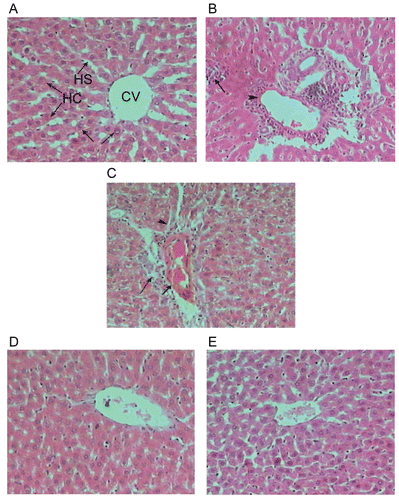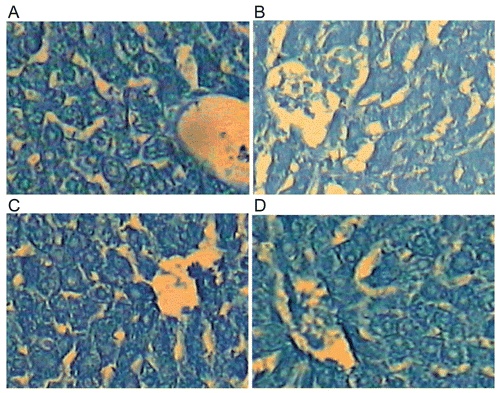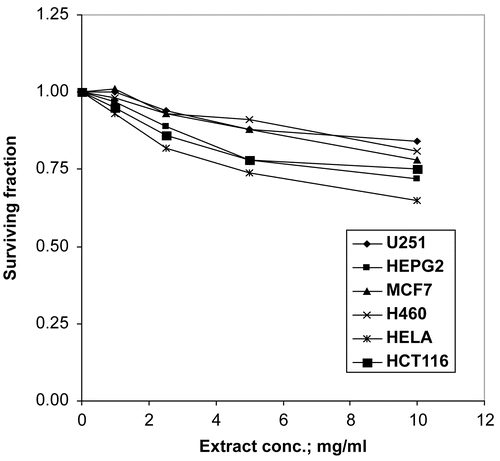Figures & data
Table 1. Effect of 70% methanol and chloroform extracts of L. leonurus on serum biochemical parameters and lipid peroxidation in paracetamol-induced hepatic damage in rats.
Figure 1. A photomicrograph of section of liver of (A) control rat showing the architecture of a hepatic lobule, (B) rat liver given an oral dose of paracetamol equivalent to 3 g/kg BW showing focal necrosis associated with inflammatory infiltration. Notice the venous congestion in the portal area, (C) rats given an oral dose of paracetamol equivalent to 3 g/kg BW showing a portal tract with dilated and congested vein. Notice the periportal necrosis of the hepatocytes that surround the portal area, and the inflammatory infiltration, (D) rat daily given an oral dose equivalent to 200 mg/100 g BW of total 70% methanol extract of L. leonurus for seven successive days and treated with a dose of paracetamol equivalent to 3 g/kg BW on day 8 showing the liver architecture that appears more or less as control, and (E) rats daily given an oral dose equivalent to 200 mg/100 g BW of chloroform extract of L. leonurus for seven successive days and treated with a dose of paracetamol equivalent to 3 g/kg BW on day 8 showing the liver architecture that appears more or less as control (H & E stain-X 300).

Figure 2. A photomicrograph of section of liver of (A) control rat showing the proteinic contents. Notice the irregular particles of various sizes that are equally distributed in the cytoplasm of the liver cells. The nucleoli are intensely stained while the ground cytoplasm and nucleoplasm display faint stainability, (B) rat liver received a single oral dose of paracetamol equivalent to 3 g/kg BW showing the stainability of the proteinic inclusions of the hepatocytes. The stainability is relatively diffused in both the cytoplasm and nucleus, (C) rat daily received an oral dose equivalent to 200 mg/100 g BW of total 70% methanol extract of L. leonurus for seven successive days and received a single oral dose of paracetamol (3 g/kg BW) on day 8 showing the proteinic inclusions in many liver cells. Notice that the stainability is mostly diffused in cytoplasm and nuclei, and (D) rat daily received an oral dose equivalent to 200 mg/100 g of chloroform extract of L. leonurus for seven days and received a single oral dose of paracetamol (3 g/kg BW) on day 8 showing the proteinic inclusions. Notice that in some cells the proteinic particles are relatively few in number. No change was observed in most hepatocytes (Bromophenol blue reaction-X 600).

Table 2. Effects of total 70% methanol and chloroform extracts on the carrageenan-induced hind paw edema in rats.

